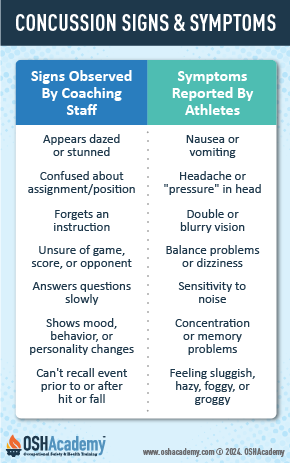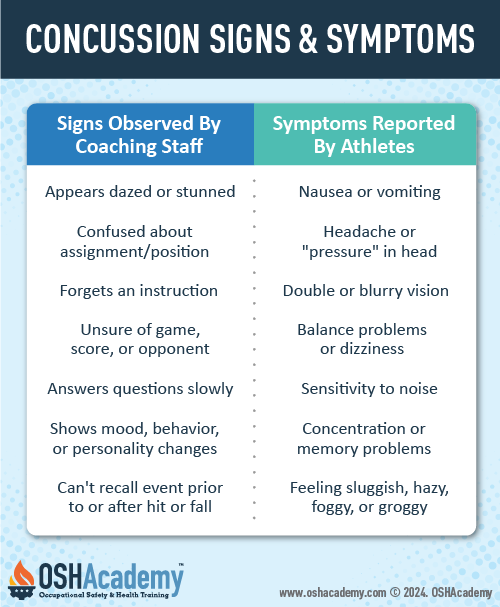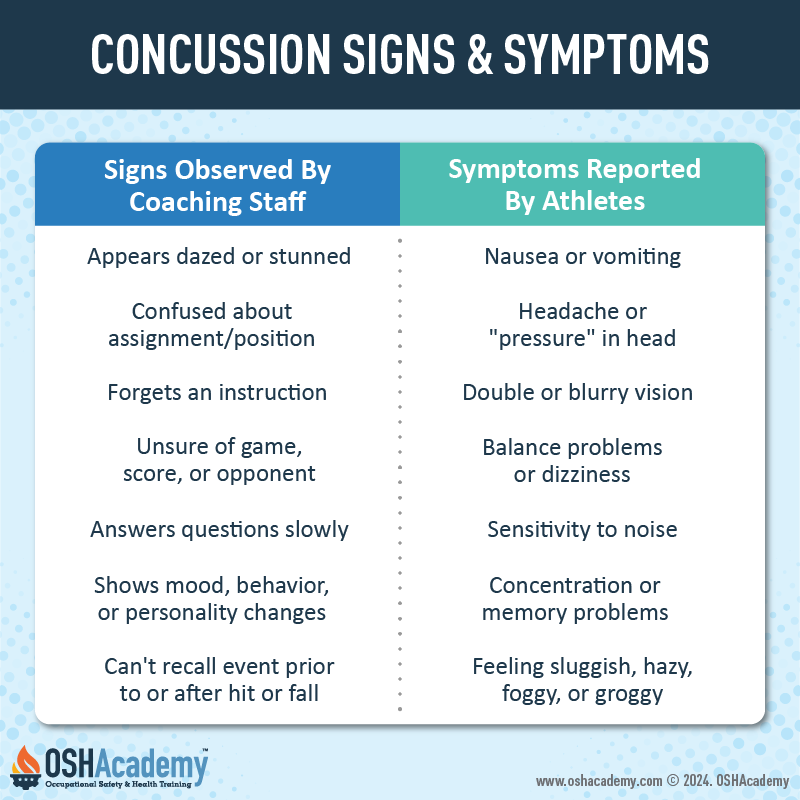Danger Signs
As a coach, your first job is to be ready to intervene when a player seems "off." Remember, you cannot see a concussion, and there isn't just one indicator of a concussion. Recognizing a concussion requires coaches to watch for different signs and symptoms. As a coach, you need to make sure and ask others to report if they see any of the following things happen to the athletes:
- A forceful bump, blow, or jolt to the head or body that results in fast movement of the head.
- Any concussion signs or symptoms. This could include a change in the athlete's behavior, thinking, or physical functioning.
Athletes who show or report one or more of the symptoms below, or even just don't "feel right" after a bump, blow, or jolt to the head or body, may have a concussion.



Signs and symptoms of a concussion mostly show up soon after the injury. However, you may not see the full effect of the injury for possibly hours or even days. For example, one of the most common symptoms of a concussion is a headache directly following the blow or accident, or headaches that develop within a few hours or days.
You must assess the player and make sure someone supervises him or her for at least two hours after you suspect a concussion.
Knowledge Check Choose the best answer for the question.
1-4. One of the most common symptoms of a concussion is _____.
You forgot to answer the question!
